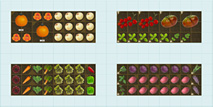How to grow Nettles?
- Latin Family: Urticaceae
- Latin Genus: Urtica
- Ease of Growing: Easy
- Growing Type: Perennial
Nettles History
Soil Preference
How to care for Nettles?
Water
Fertilizer
Seeds
Seed Viability:
Light
Part shade
Conditions:Warm
Season:
Problems
Nettles Types
- Dead Nettles
- False Nettles
- Stinging Nettles
- Wood Nettles
Dead Nettles (Lamium spp.) are a group of non-stinging plants that resemble true nettles but do not have irritating hairs. They are often grown as ground cover and produce small, colorful flowers. Unlike stinging nettles, they are safe to touch and are sometimes used in herbal remedies.
False Nettle (Boehmeria cylindrica) is a non-stinging plant that resembles true nettles but lacks the irritating hairs. It grows in moist, shady areas across North America and is an important food source for certain butterfly larvae. Unlike stinging nettles, it is safe to touch and handle.
Nettles (Urtica spp.) are herbaceous plants known for their stinging hairs, which can cause temporary skin irritation upon contact. They grow in temperate regions worldwide and can be found in forests, meadows, and along riverbanks.
Wood Nettle (Laportea canadensis) is a native North American plant commonly found in moist, wooded areas. Unlike the common stinging nettle, it has broader leaves and stinging hairs on both the stems and leaves. It is valued for its edible young shoots and medicinal properties.
Pests
- Leafhoppers
- Caterpillars
- Spider Mites
Diseases
- Rust
- Powdery Mildew
- Root Rot
